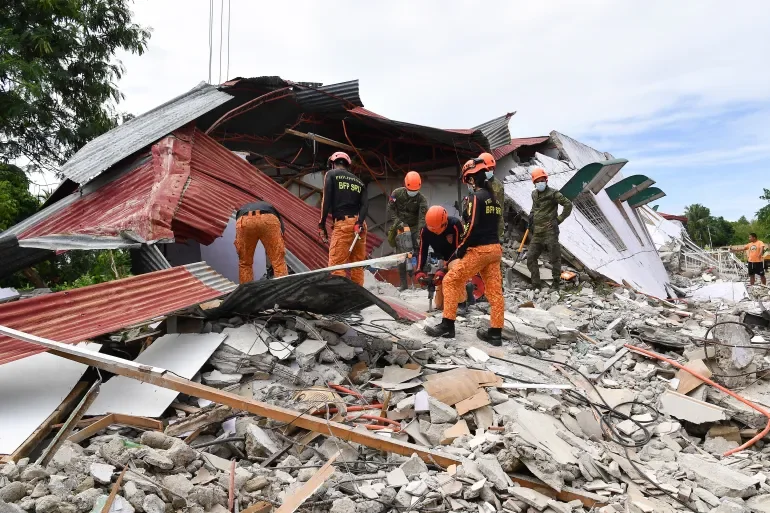Magnitude-6.9 Earthquake Strikes the Philippines
Photo Credit: Al Jazeera
On Sep. 30, more than 60 people died in a devastating 6.9 magnitude earthquake in the Philippines. The earthquake mainly affected Cebu, one of the most populated cities in the Philippines.
After the earthquake, doctors were still treating as many patients as they could. Many authorities delivered food, and rescuers dug through rubble. However, water, food, and fuel are still needed.
According to CBS News, it’s hard to calculate the real number of fatalities in Cebu and other cities because so many people are missing. However, days after the quake, the death toll rose to 69 people, according to the BBC.
The earthquake injured around 500 people and displaced at least 80,000, making it one of the strongest earthquakes the Philippines has suffered since 2013, according to Time.
Since the earthquake struck, hospitals were in such high demand that Cebu Provincial Hospital in Bogo City had to treat patients outdoors. When aftershocks hit, locals ran for shelter as pieces of concrete came flying at them.
The earthquake that the Philippines faced had devastating effects on citizens and families. Arguel Estalicas, a local in Cebu, told the BBC that she got out of bed screaming when the earthquake struck and quickly ran outside with her family. They slept under the dark sky, but when a light rain started, Estalicas and her family did not have raincoats, so they wrapped themselves in plastic bags.
"I still couldn't process what had happened to us," Estalicas said. "I am overwhelmed with the things we experienced in the last two days."
The Philippines often experiences seismic activity due to its location on the Pacific Ring of Fire, a volatile zone where several tectonic plates converge.
Every day, the Philippine Institute of Volcanology and Seismology (PHIVOLCS) records an average of 20 tremors. However, only approximately 100 to 150 are strong enough to be felt each year, prompting common seismic disasters in the country.

